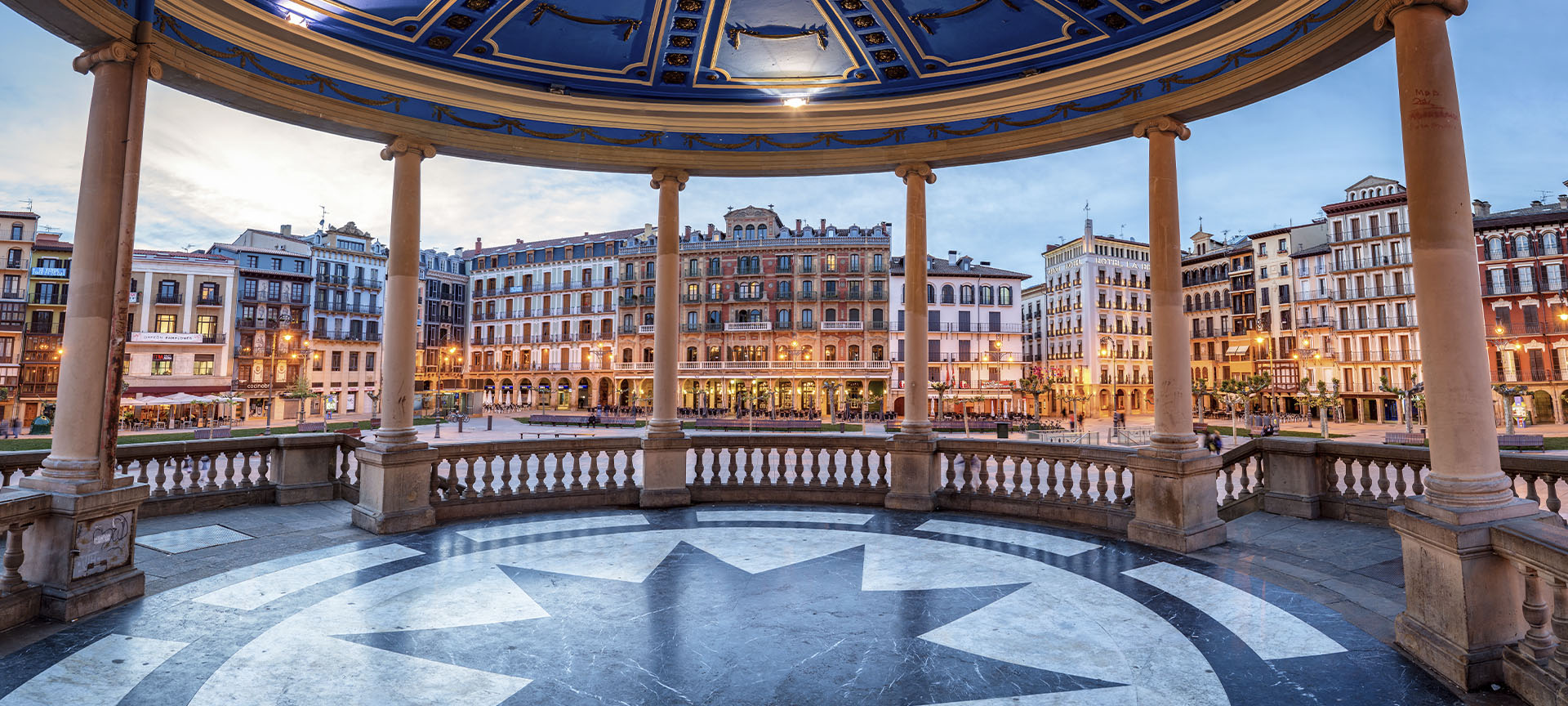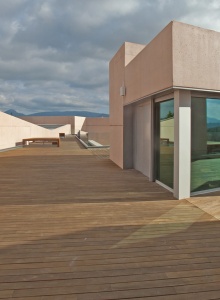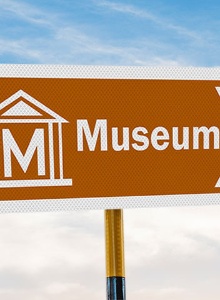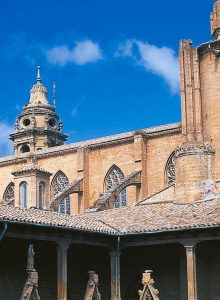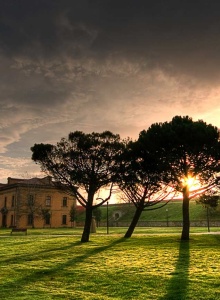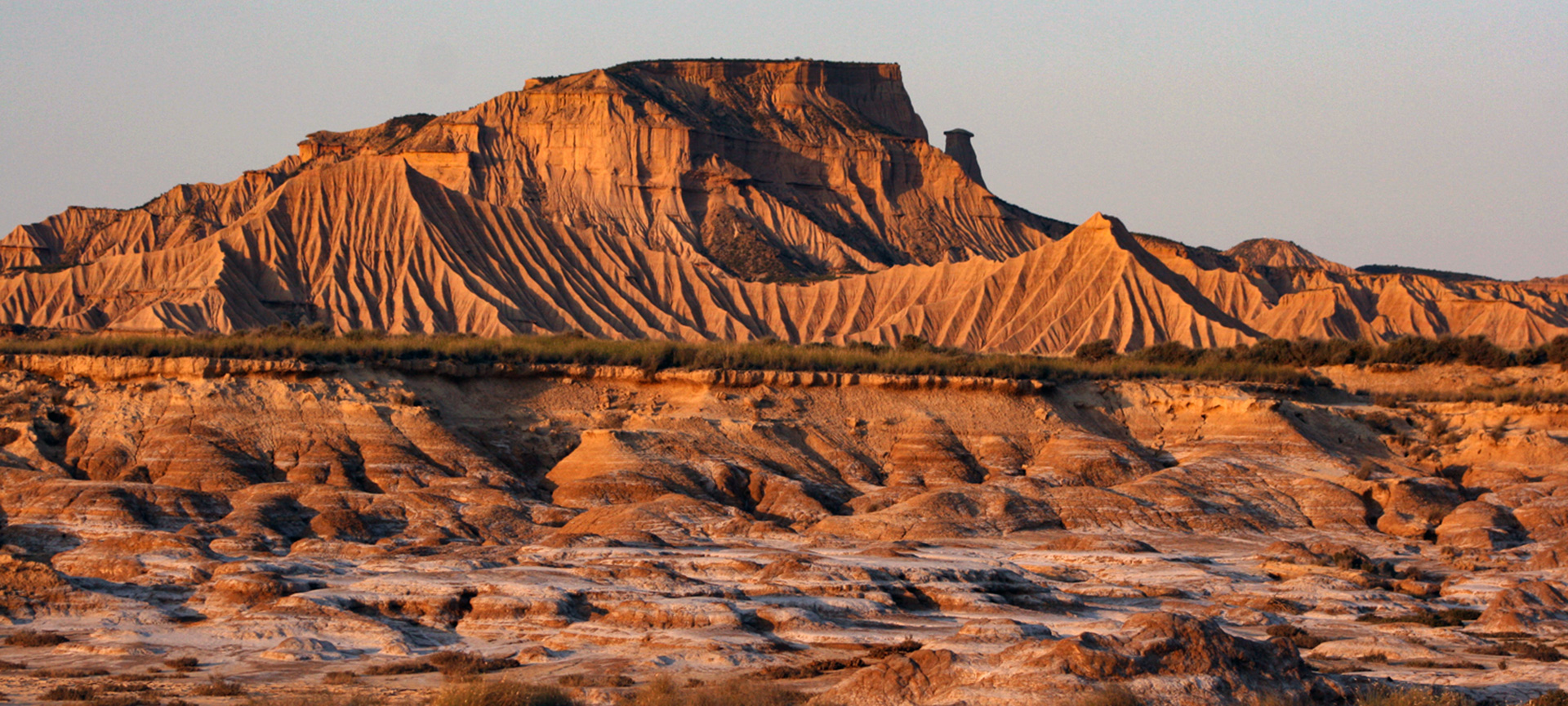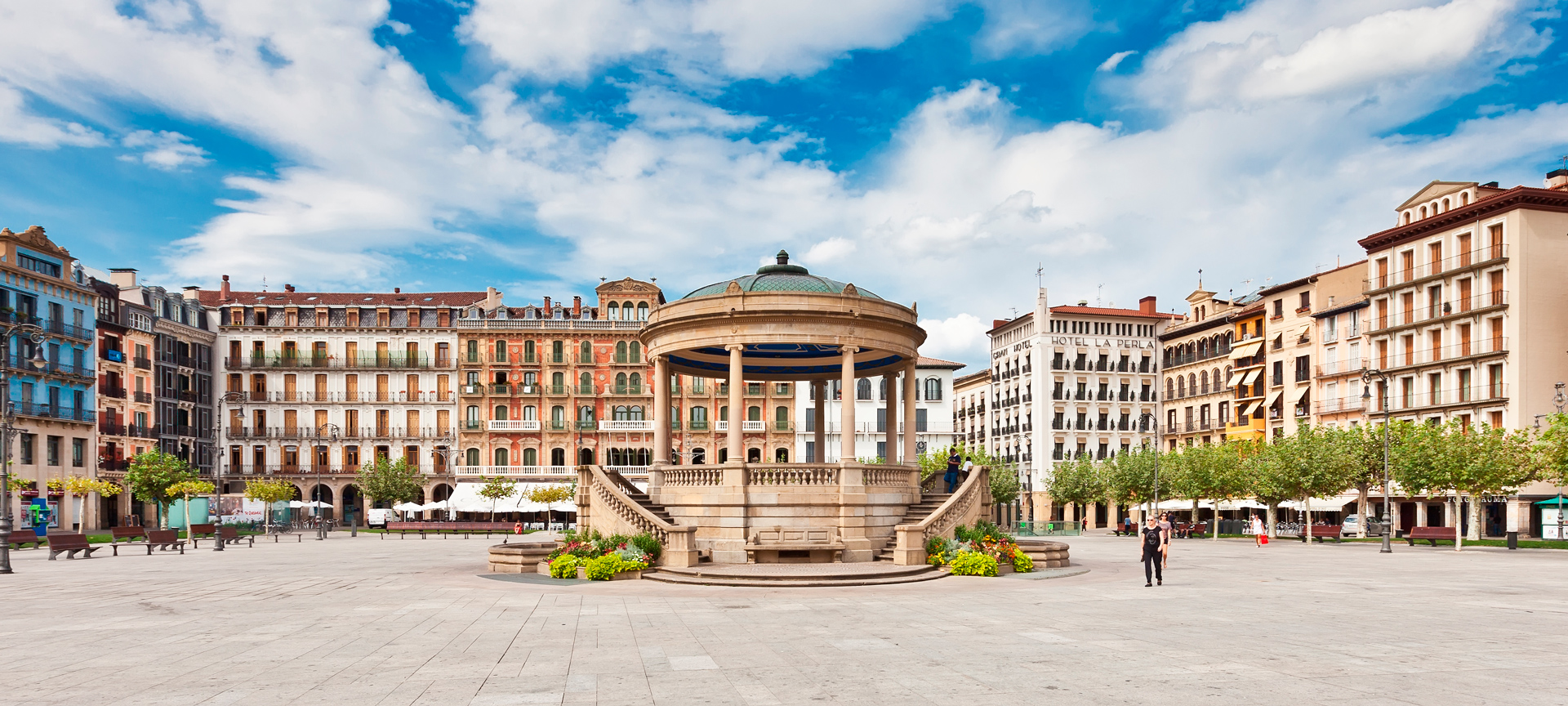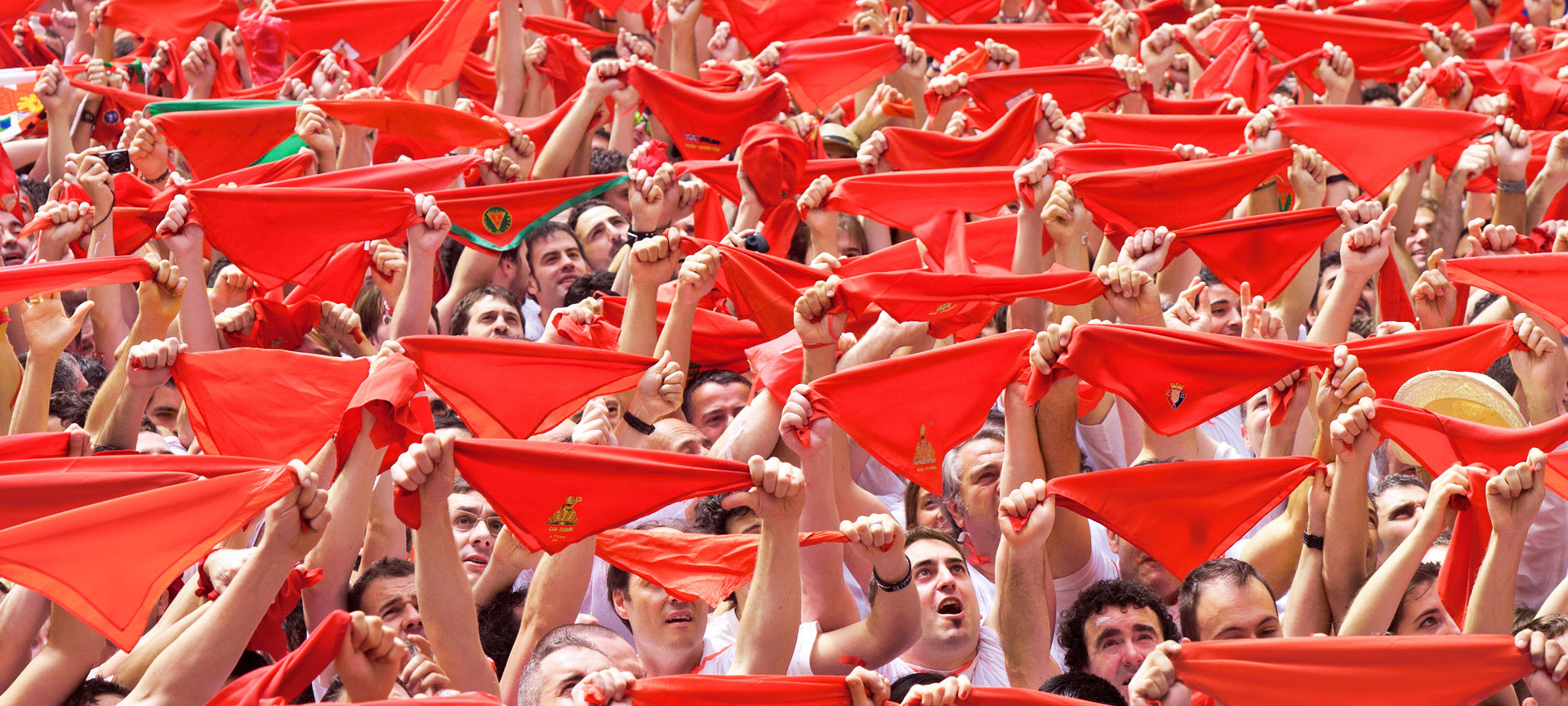Pamplona-Iruña, a city full of history and deep traditions, is located in the fertile plain of the Arga River. In the streets and squares of the old town, you'll find a remarkable array of landmarks, most notably its churches and medieval city walls.
Pamplona-Iruña is a city where tradition and modernity coexist in harmony. There is a theory that, around the first millennium B.C., the Vascones established an early settlement beneath the current city, which they called Iruña, meaning “the city” in Basque. Later, in 75 B.C., the Roman general Pompey founded the city of Pompaelo. The importance of the city increased in the 10th century with the kingdom of Pamplona-Iruña. Under the reign of Sancho III the Great (11th century), the current route of the Camino de Santiago was established through Navarre, a development that would shape both the urban landscape and the historical course of the city.
A visit to the capital of Navarre begins with the Pamplona-Iruña of the boroughs, a group of neighborhoods with medieval origins that formed the foundation of the current urban center. The site of the Town Hall today was the site of the old Jewish quarter, which led to the union of the three settlements.Today, the stately Baroque façade of the Town Hall, built in 1752, stands.Next to the Town Hall, you can admire the Gothic Church of San Saturnino or San Cernín, built in the 13th century. Its two towers, previously crowned by battlements, reveal its former defensive function. Above the old cloister stands the Baroque chapel of the Virgen del Camino, co-patron saint of the city.The nearby Cámara de Comptos (13th century), the oldest civil building still standing, was the headquarters of the former Court of Auditors of Navarra between the 14th and 19th centuries. Leaving along Calle Mayor, you reach the church of San Lorenzo (19th century), which houses the Baroque chapel of San Fermín.On the Cuesta de Santo Domingo, you can see other buildings of the old Iruña: the Plateresque façade of the fascinating Museum of Navarre, which houses an important collection of archaeological pieces and artworks by painters such as Goya, and the Gothic Church of Santo Domingo, dating back to the 16th century.The Plaza del Castillo, lined with trees and surrounded by beautiful 18th-century buildings, is the very heart of the city. The Palace of Navarre, seat of the Navarrese government, was built in the mid-19th century and retains its neoclassical façade. Inside, the Baroque style throne room and the altarpiece in the chapel are particularly noteworthy.Going down one of the nearby streets, you reach the Navarrería neighborhood, where the Cathedral of Santa María la Real stands at its center. Construction of the cathedral began in the mid-13th century on the site of the former Romanesque cathedral, though work was not completed until the 16th century. This magnificent building features three Gothic-style naves, along with several Neoclassical additions. The central nave houses the mausoleum of the Kings of Navarre, Charles III the Noble and Eleanor of Trastámara (15th century), crafted in alabaster and considered one of the most important sculptural ensembles in Navarre. The main altar is presided over by the image of the Virgin Santa María la Real, before which the Navarrese monarchs took their oaths during coronation ceremonies.Also noteworthy is the Gothic cloister (13th-15th century), featuring the Puerta del Amparo, the Barbazana Chapel and the Puerta Preciosa. The Diocesan Museum houses an impressive collection of sacred art, highlighted by a group of medieval sculptures of the Virgin and several pieces of medieval French goldsmithing.Next to the cathedral complex stand several noble houses, including the 17th-century Itúrbide House, which still bears the family's coat of arms, and the Goyeneche Palace, built a century later.The city also has ample green spaces. Specifically, parks like La Media Luna, the Ciudadela with its Vuelta del Castillo park, Yamaguchi Park and the Galaxy Garden, the Arga River Park and the Taconera Gardens are vibrant examples of a city that has experienced exemplary urban growth.Gastronomy, festivities and the surrounding areaThe old town of Pamplona is a good place to discover the delicacies of the varied Navarrese gastronomy. In any of the restaurants, you can enjoy classic products from the Navarrese countryside – such as asparagus, piquillo peppers and beans. Lamb, roasted or in chilindrón sauce, is the most iconic dish, always paired with a quality wine bearing the Navarra Designation of Origin and followed by a pacharán, a traditional anise-flavored liqueur, for dessert. To get to know Pamplona-Iruña and its inhabitants in full festival mode, a visit to the city must be made during the Sanfermines(July 6-14), declared of International Tourist Interest. One of the main attractions of these patron saint festivals is the bull runs (a tradition where people run in front of the bulls), which begins on the Cuesta de Santo Domingo, then continues along Mercaderes Street, turning onto Estafeta Street and finally leading to the bullring. However, before participating, it is advisable to be in good shape and take certain precautions, such as entering only through the designated access points, running only part of the route, and avoiding provoking the bulls. During the fiestas, it is important to book accommodation well in advance. 45 km from the capital of Navarre, in the historic medieval town of Olite, is the Parador Príncipe de Viana. This hotel is attached to the 15th century palace-castle, declared a National Monument, with its notable towers and battlements.Near Pamplona-Iruña you can also enjoy places of great natural beauty. To the west is the Urbasa and Andía Natural Park. To the north, the towns and valleys of the Navarre Pyrenees offer some of the most beautiful landscapes in the entire region. In the Atlantic Pyrenees, the westernmost part, you'll find significant natural areas, such as Bertiz Nature Reserve.One of the most significant valleys is Baztán, which stretches out surrounded by mountains and includes towns such as Berroeta, Aniz, and Ziga. These towns are home to numerous medieval towers and palaces, adding to the area's historical charm. Good examples of these constructions can be found in the valley's capital, Elizondo, from where you can head to visit Urdax and Zugarramurdi. The latter are known for their caves and for being the former setting of akelarres (witches' gatherings).In the Eastern Pyrenees, the Camino de Santiago takes centre stage. This route, originating in France, crosses into Navarre and reaches Roncesvalles, a village founded as a sanctuary and hospital in 1132 – and the first stop for pilgrims. Following the mountain range to the east is the Selva de Irati, a unique natural area that contains one of the largest beech forests in southern Europe. Another point of interest in the Eastern Pyrenees is the Salazar Valley and Ochagavía, the most populous town in this region.
